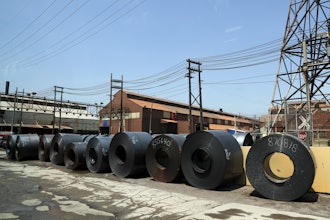 There’s no question: It’s an employer’s market. With unemployment high, workers are willing to take more demanding jobs for less effective pay than at any point in recent history. Skilled laborers suddenly finding themselves out of work are looking for unskilled jobs in the food industry out of necessity, and employers can pick up needed labor for bargain prices.
There’s no question: It’s an employer’s market. With unemployment high, workers are willing to take more demanding jobs for less effective pay than at any point in recent history. Skilled laborers suddenly finding themselves out of work are looking for unskilled jobs in the food industry out of necessity, and employers can pick up needed labor for bargain prices.
But at what cost?
The Food Chain Workers Alliance (FCWA) bills itself as “a coalition of worker-based organizations whose members plant, harvest, process, pack, transport, prepare, serve and sell food, organizing to improve wages and working conditions for all workers along the food chain.”
The organization recently released “The Hands That Feed Us,” a report that compiles results from 700 surveys of workers across the food supply chain, 219 of whom work in meat packing or food processing facilities. Respondents to the survey included workers in production, processing, distribution, retail and service positions. The results show poor working conditions for food industry workers, including lack of health benefits, poor training and an alarming rate of employees receiving poverty level wages. In fact, according to the survey, food industry employees are twice as likely to receive food stamps as other U.S. workers.
Among surveyed respondents in “meatpacking, poultry and food processing” jobs, the report shows an alarming rate of poverty. Workers in these industries receive wages that are:
- Subminimum wage — 13.1 percent.
- Poverty wage — 38.4 percent.
- Low wage — 31.8 percent.
- Living wage — 16.7 percent.
Further distressing is that 83 percent of food industry workers report that they do not receive health insurance from their employers.
Food industry workers will not quietly die of pneumonia in their homes in order to avoid inconveniencing other insured workers and taxpayers who will end up footing the medical bills; and we shouldn’t expect them to. When employers refuse to provide employees with health benefits as part of their compensation packages, those employers aren’t cutting employees off from health care; they’re simply externalizing that cost — passing it on to someone else. In fact, 33 percent of respondents to the FCWA’s survey report that they seek primary care at the emergency room.
Over half said they have come to work sick. Setting aside the moral implications of providing workers with poverty-level wages and no reasonable access to healthcare, this creates a serious food safety risk.
Poor working conditions can also lead to food safety risks in more nuanced ways — how seriously can we expect an employee to take his work, when his full-time employment isn’t enough to pull him above the poverty line? How much more seriously is an employee expected to take his job than his own employer?
Further, low pay leads to high turnover, which means new, untrained employees are handling food products. In the FCWA’s survey, a warehouse manager is reported as saying that employees will seek new employment, “especially when the money is not as good, then … it is easy to move around, especially in this area.”
The report suggests that this poor training leads to employee injury in food processing plants, stating that “workers in food, meat and poultry processing plants suffer from a high rate of injuries on the job due to the repetitive and rapid nature of assembly line work and due to the lack of training, and lack of safety with regard to dangerous slaughtering and processing machines. Sixty-five percent of processing workers surveyed reported experiencing injuries or illnesses on the job.”
The most common of these injuries, according to the FCWA are:
- Cuts — 37.8 percent.
- Repetitive motion injuries — 34.6 percent
- Slips and falls — 26.8 percent.
- Back injuries — 25.2 percent.
A facility full of underpaid and underinsured workers does little to guard the food supply against adulteration. Investment in quality workers not only safeguards a food processing facility against potentially costly mistakes committed by undertrained novices, but it will also go a long way toward protecting consumers from these same potentially deadly errors.
What’s your take? Please feel free to email[email protected] or comment below!






















